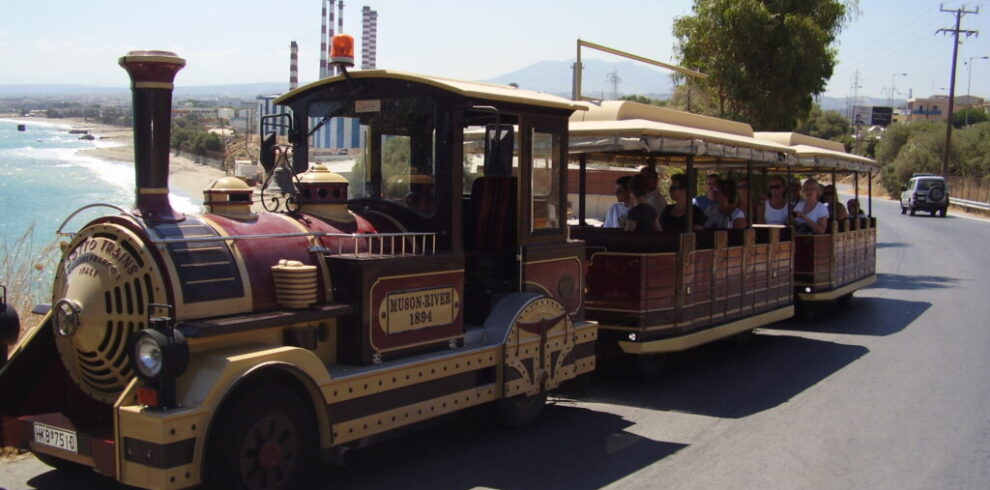- 4
- 1
- 4
- 2
- 1
- 3
- 1
- 3
- 1
- 3
Heraklion
No other city or town in Crete is as important as the city of Heraklion. The city of Heraklion possesses a heritage that spans across hundreds of years. Heraklion stands at the outskirts of the palace of Knossos, which historians know to be the heart of the ancient Minoan civilisation.
The Modern Face of Heraklion Today, Heraklion is a city that embraces its long and colourful past but is nonetheless busy with building bridges into the future. With around 200, 000 people living within its boundaries, Heraklion is a busy, bustling city. Within the city is the Heraklion International Airport, the second largest airport in Greece in terms of size and traffic and the car hire agencies located. It is also a very important very important passenger and commercial port. Though a short drive out of the city will take the traveller to the most famous tourist attraction in Crete – the palace of Knossos – Heraklion itself has many interesting sights that should not be missed. Among these places that should be visited in Heraklion is the Liondaria or Lions Square, officially known as the Plateia Eleftheriou Venizelou. If Heraklion is the heart of Crete, then Liondaria is the heart of Heraklion. This is where people meet for business or pleasure. Here, one can sit at one of the cafes and be served light Cretan meals while watching people. Other sites that should not be missed when visiting Heraklion are Koules and the ancient Venetian city walls. Koules, also known as the Castello del Molo and the Rocca a Mare, is a fortress that has protected Heraklion since the 13th century. It overlooks the old Venetian harbour. As for the ancient Venetian city walls, they are certainly worth a look as these walls were the ones responsible for making the Turkish siege of Heraklion last for 21 years. This is also the place where the famous Cretan philosopher Nikos Kazantzakis has been laid to rest. The heart of Crete beats in Heraklion, and a holiday to Crete will not be complete without an exploration of this city.
Crete was known as Kriti or the city as Handakas in past.
The archaeological site of Knossos is sited 5 km southeast of the city of Iraklion.
There is evidence that this location was inhabited during the neolithic times (6000 B. C. ). On the ruins of the neolithic settlement was built the first Minoan palace (1900 B. C. ) where the dynasty of ruled. This was destroyed in 1700 B. C and a new palace built in its place.
The palace covered an area of 21, 000sq. m, it was multi-storeyed and had an intricate plan. Due to this fact the Palace is connected with thrilling legends, such as the myth of the Labyrinth with the Minotaur.
Between 1. 700-1. 450 BC, the Minoan civilization was at its peak and Knossos was the most important city-state. During these years the city was destroyed twice by earthquakes (1. 600 BC, 1. 450 BC) and rebuilt.
The city of Knossos had 100.000 citizens and it continued to be an important city-state until the early Byzantine period.
Knossos gave birth to famous men like Hersifron and his son Metagenis, whose creation was the temple of Artemis in Efesos, the Artemisio, one of the seven wonders of the ancient world.
The site was discovered in 1878 by Minos Kalokairinos. The excavations in Knossos begun in 1. 900 A. D. by the English archaeologist Sir Arthur Evans (1851- 1941) and his team, and they continued for 35 years.
The most important findings of the city of Knossos are:
The Great Palace”Prince of the Lillies”
The Great Palace covered an area of 20. 000 sq. meters and had 1. 400 rooms.
Every section of the Palace had a specific use. In the west side of the Palace were the chambers of the ceremonies, of the administration and of the public storehouse. The Throne room is also located here.
To the west of the Throne room was the great west Court of the Palace and the theatre, where all the ceremonies and gatherings took place. The East side of the Palace, had more floors, verandas and official rooms with wonderfull frescos, and was the side of the Palace where the Queen had her private chambers.
The entrance to the Palace today is through the West Court. The West Entrance leads to the Corridor of Procession. Its walls were decorated with a fresco depicting a procession, which today is exhibited in the Archaelogical Museum of Heraklion. To the left of the corridor is the Propylaeum of the Palace, where the huge double horns – a holly symbol of the Minoan religion- are located. A staircase leads to the Central Court, where the Throne room is sited, and another one to the upper floor. There are various rooms on the same level with the Throne, like the Antechamber, the Pillar crypt, the room of the Tall Jar and the Treasure room of the High priest, were various precious objects, now exchibited at the Iraklion museum, were found.
Near the south west corner of the Court a road leads to the Corridor of the Procession were the famous fresco of the “Prince of the Lillies” was found. The original is displayed in the Iraklion museum, and a copy located in its place. .
The Little Palace.
It is located west of the Great Palace and is the second bigger building of Knossos. In one of its chambers was found the wonderfull Bull’s Head made of steatite, which is exhibited in the Archaeological Museum of Heraklion.
The Royal Villa.
It is located northeast of the Great Palace and it is considered part of it. A magnificent jar was found here, with papyrus in relief.
The House of the High Priest.
This building is considered to be the House of the High Priest due to the stone altar that was found there. The altar is surrounded with double axes stands.
The Caravan Serai.
It is located opossite to the Great Palace and it was the official entrance to the palace. It served as public baths with running water, where the traveller or visitor of Knossos should bath before visiting the King.
The Royal Temble Tomb-Sanctuary.
It is located south of the Palace and it is considered to have belonged to one of the Last Minoan Kings.
Phaestos Minoan palace -south Heraklion prefecture:
Phaestos was the second most important palace city of Minoan Crete. Of all the Minoan sites, Phaestos (fes-tos) has the most awe-inspiring location, with all-embracing views of the Mesara Plain and Mt Ida. The layout of the palace is identical to Knossos, with rooms arranged around a central court.
In contrast to Knossos, Phaestos has yielded very few frescoes. It seems the palace walls were mostly covered with a layer of white gypsum; there has been no reconstruction. Like the other palatial period complexes, this one had an old palace that was destroyed at the end of the Middle Minoan period.

- Jan
- Feb
- Mar
- Apr
- May
- Jun
- Jul
- Aug
- Sep
- Oct
- Nov
- Dec

- Jan
- Feb
- Mar
- Apr
- May
- Jun
- Jul
- Aug
- Sep
- Oct
- Nov
- Dec

- Jan
- Feb
- Mar
- Apr
- May
- Jun
- Jul
- Aug
- Sep
- Oct
- Nov
- Dec

